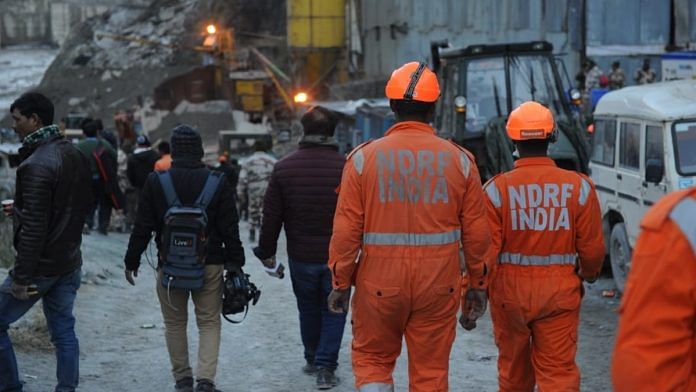
New Delhi: An expert committee that studied the 2013 Uttarakhand flash floods had highlighted the need for installing an advance forecasting network that can predict water flow in order to help better manage the opening and closing of barrages along the Ganga and its tributaries, and minimise the damage caused by unexpected flash floods.
The committee had been set up by the Union environment ministry to assess the impact of hydroelectric projects during the June 2013 disaster that killed hundreds in Uttarakhand. The panel, headed by environmentalist Ravi Chopra, submitted its report in April 2014.
A flash flood in the state Sunday has led to at least 11 deaths, while over 200 are reported to be missing. The exact cause of the disaster is yet to be ascertained, but some experts have cited satellite images to suggest that a landslide may have triggered the flash floods.
What report on 2013 floods said
Between 15 and 17 June 2013, there was incessant rainfall across Uttarakhand. The rain falling on wet snow led to the collapse of the Chorabari lake, which is held together by glaciers, just upstream of the Kedarnath shrine.
The sudden bursting of the lake, steep topographic conditions and continuing rain led to catastrophic floods in the Mandakini valley.
The expert panel’s analysis showed that, in the absence of the Tehri dam, the towns of Rishikesh and Haridwar — situated on the banks of the Ganga — would have been completely engulfed in the floods.
However, the report also pointed out that while the Tehri dam did attenuate the flow of the flood, it was a matter of chance, not design.
The Tehri dam is not designed to perform a flood-control function, the panel said. But, it added, the dam played that role since the flood occurred in mid-June, a few days before the onset of the annual monsoon season, when the Tehri reservoir was at its lowest level.
The report also pointed out that the Vishnuprayag barrage was obstructed by a very high-intensity debris flow brought by the Khiron Ganga, a tributary of the Alaknanda just upstream of the Vishnuprayag hydroelectric plant.
The passage through the gates of the barrage was blocked by the massive boulders and debris. It led to a river outflanking the barrage on the left bank, sweeping away the company’s offices, helipad and part of a national highway.
The expert panel expressed some doubt about whether the Vishnuprayag project authorities were able to properly manage the opening and closing of the gates.
The report went on to highlight that silt plays an important role in the damage caused by flash floods. Hence, managing the silt and the operation of barrages become crucial to minimise the damage caused by natural disasters.
“The operation of barrages during extreme events leaves a lot of ambiguity as to when the gates should be fully lifted. Without any real-time flood forecasting network or an automated weather station upstream and the possibility of massive landslides, the barrages are likely to face severe blocking,” the report read.
Taking the example of the Tehri dam, the experts said it requires the installation of a ‘Real Time Flow Forecasting Network’ so meteorological data can be used to predict how much water would enter the Tehri reservoir at least 12 to 18 hours in advance.
With this knowledge, the water flow can be controlled safely, and the Tehri dam used for flood moderation.
The report also highlighted the contribution of the muck (or waste) excavated from the river beds and kept along river banks. It recommended improving muck disposal and rehabilitation in Uttarakhand.
The team pointed out that studies to determine the minimum distances between two consecutive hydroelectric plants need to be conducted, and this distance needs to be increased from the currently agreed 1 kilometre.
Subscribe to our channels on YouTube & Telegram
Why news media is in crisis & How you can fix it
India needs free, fair, non-hyphenated and questioning journalism even more as it faces multiple crises.
But the news media is in a crisis of its own. There have been brutal layoffs and pay-cuts. The best of journalism is shrinking, yielding to crude prime-time spectacle.
ThePrint has the finest young reporters, columnists and editors working for it. Sustaining journalism of this quality needs smart and thinking people like you to pay for it. Whether you live in India or overseas, you can do it here.